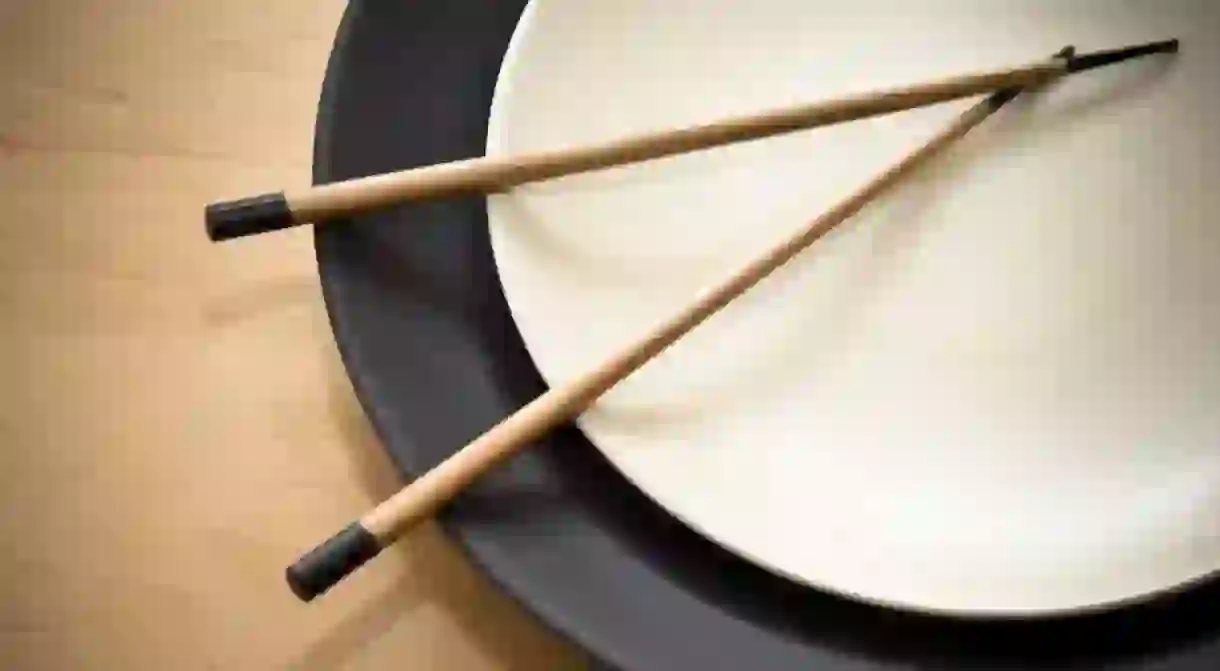Why Do Chinese People Eat With Chopsticks?

Though people like to joke that a rice-staple country shouldn’t be eating with two long sticks, chopsticks lend themselves well to China‘s style of cuisine. Now ubiquitous in the country and in Chinese restaurants worldwide, they have a long and distinguished history. Here’s everything you need to know.
The earliest confirmed use of chopsticks in China was in 1200 B.C. during the Shang dynasty. Yes, the same dynasty that gave us the oracle bones and the strongest examples of ancient Chinese artifacts also originated China’s favorite utensil.
These earliest chopsticks were made of bronze and were used primarily for cooking. Designed much longer than today’s chopsticks, the bronze versions were able to reach deep into pots of boiling oil.

For almost a thousand years, this was the primary function of chopsticks – it wasn’t until 400 A.D. that they were shortened and used for eating. Around this time, cooks started chopping meat into small pieces to conserve cooking oil. Consumers quickly realized that chopsticks were perfect for moving these bite-sized pieces from bowl to mouth.
Long before this, however, the utensil had already received a celebrity endorsement from none other than Confucius himself. The philosopher believed that sharp utensils like knives would remind eaters of the gruesome way the meat came to be in the bowl. Chopsticks, on the other hand, had dull ends, thus sparing their users from images of the slaughterhouse.

By 500 A.D, chopstick use had spread from China to neighbors Japan and Vietnam, where the design was adapted to local tastes. In Japan, chopsticks were made in different sizes for men, women, and children respectively. In Vietnam, palm wood was used in favor of bronze and porcelain.
While it was Japan that eventually invented the one-use chopsticks in 1878, China was the original source of the ingenious design that has brought angst to many a takeout eater worldwide.













